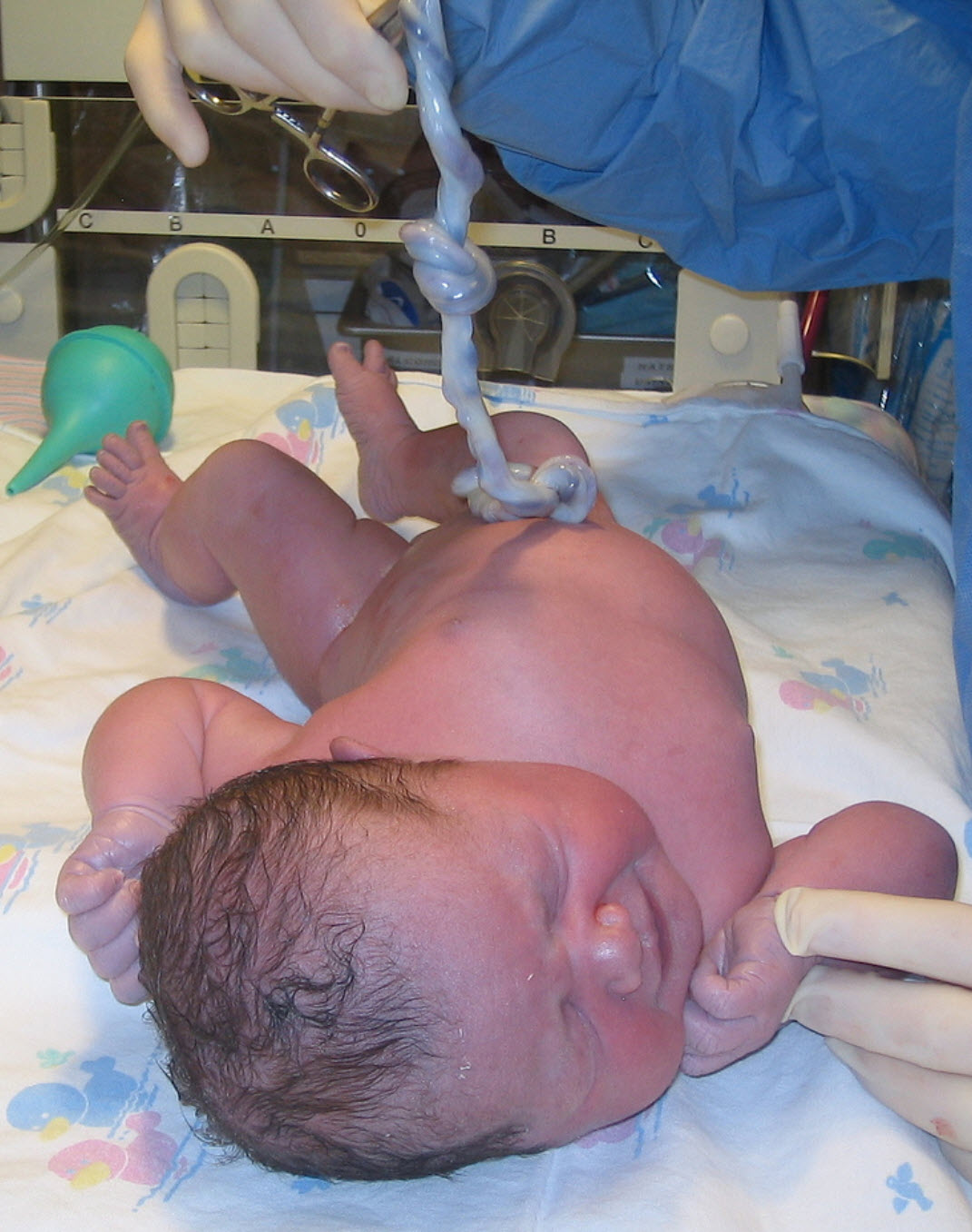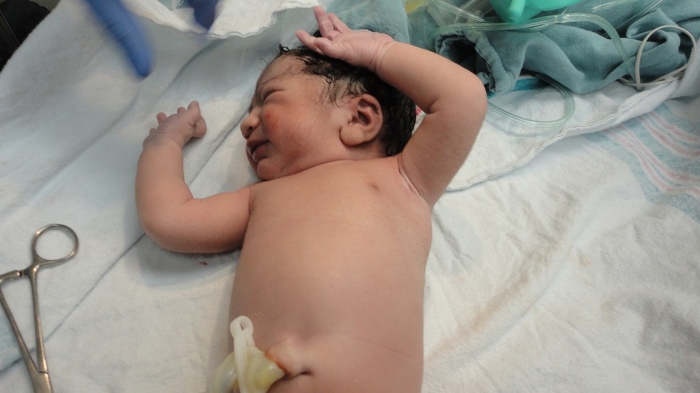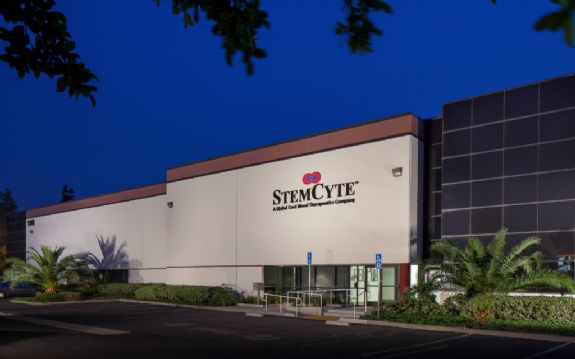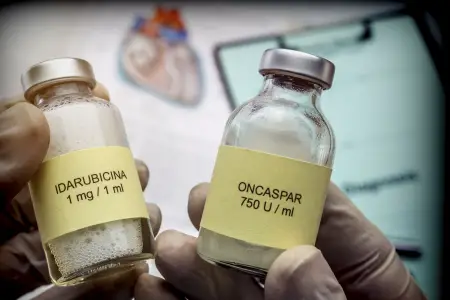Cord Tissue Banking
Cord Tissue and Cord Tissue Banking
To recognize the importance of cord tissue banking, first the treatment potential of mesenchymal stem cells isolated from umbilical cord tissue has been quickly acknowledged both by the academic society and the industry. A high density of mesenchymal stem cells in cord tissue, relatively simple extraction of cells from cord tissue, endurance during deep freezing and thawing, as well as their favorable safety profile makes cord tissue stem cells an interesting resource for the future treatment of a wide variety of conditions thanks to cord tissue banking.
To date, almost all of the cord blood banking facilities have developed mechanisms for collection, processing and long-term storage of umbilical tissue stem cells in the form of cord tissue banking. Some of the cord blood banks are actively supporting extensive clinical research with the final goal to broaden the therapeutic potential of this cell type.
We have a category in this article about cord blood banking reviews with a category called Additional Services. In this category we rank very high companies that allow you to practice cord tissue banking apart from classical cord blood banking, such as CBR, to put an example. We also compare cord tissue banking vs cord blood, but actually it is not a “versus” situation, and you should be banking both: cord blood and cord tissue banking.
Cord tissue banking, what is banking cells, mean more baby stem cells available for future use, which directly opens more treatment options and raises the chances of completely healing the underlying disease. Once the standards for umbilical cord blood banking process have been established, it was quite easy for cord blood banks to introduce a new program of banking umbilical cord tissue through the additional service of cord tissue banking.
The cord tissue is usually sampled following collection of the umbilical cord blood. While some banks perform isolation of stem cells immediately after the collection of the umbilical tissue, other banks use a different approach – collection and storage of the whole umbilical cord segment that has been collected, which enables the use of multiple types of stem cells that are located in the Wharton’s jelly. Also, processing after preservation has shown to increase the number of viable cord tissue stem cells. Nowadays, a significant percentage of parents (approximately 60% in 2018) decide to perform cord tissue banking along with cord blood banking. This means that parents are also quite aware of the potential of cord tissue stem cells to be used in a wide variety of conditions.
Banking facilities offer cord tissue banking due to several well-recognized characteristics of stem cells. Cord tissue mesenchymal stem cells possess the ability to modify the immune system within the compatible host, allowing the body to fight the tissue damage or inflammation. This property of stem cells has been proven useful in the treatment of lung cancer, rheumatoid arthritis, and Parkinson’s disease. Additionally, a significant progress in the field of regenerative medicine offers treatment solutions in patients suffering from autoimmune diseases, type 1 diabetes mellitus, liver injury, heart insufficiency and autism. All thanks to this technique of cord tissue banking.
There is a high probability that close family members will also benefit from harvested mesenchymal stem cells originating from umbilical cord tissue, however in a low percentage. Parents have a one hundred percent likelihood that stem cells will be compatible. Siblings also have great chances (up to 75%) for stem cells being compatible for transplant.
Were entered in the era of regenerative medicine. Since the discovery of stem cells, many scientific efforts have been made in order to properly test and evaluate the properties of stem cells. This medical discipline is only at the beginning of development, but has already provided fascinating results. The discovery of umbilical cord tissue stem cells enables the experts to expand the therapeutic range of cell-based therapy, allowing the patients multiple options in the treatment of the underlying disease. The multipotent nature of mesenchymal stem cells provides the path towards tissue engineering, which directly leads to a decreased need for organ donors. Repairing the damage by simply transplanting stem cells into the host organism represents an effective, more simplified and, most importantly, safe treatment option that may shortly completely eliminate the need for full-organ transplantation from a donor.
Along with the development of the regenerative medicine, disorders such as stroke, spinal cord injury, heart attack and insufficiency will no longer be irreversible conditions leading to permanent disability or incapacity. Cord tissue banking along with cord blood banking allows parents to benefit from more treatment options.
Cord tissue stem cells are opening a new chapter of regenerative medicine providing solutions for many of the conditions which pose a huge burden to public health and significantly decrease the quality of life in those who suffer from such serious illnesses.
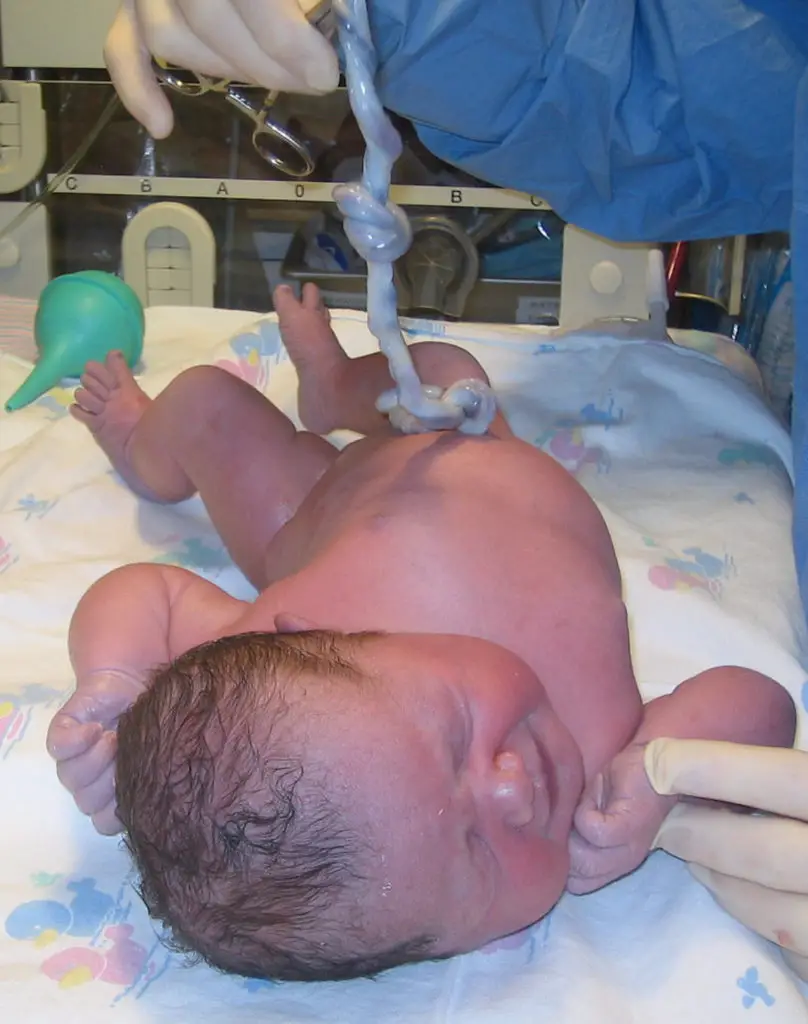
Cord Tissue Cells and their Differentiation Potential: The Growth of Cord Tissue Banking
The main value of each type of stem cells is their ability to differentiate into multiple mature cell types. A growing body of evidence suggests that stem cells originating from umbilical cord tissue have a wide differentiation potential. This means that umbilical cord tissue represents a valuable source of stem cells capable to develop into multiple tissue types. Some of the most medically significant findings were listed below.
The potential of cord tissue cells to differentiate into cartilage was extensively investigated in pre-clinical investigation models. It was found that cord tissue stem cells have the ability and may develop into mature cartilage cells, which is extremely important finding in the field of medicine dealing with serious, degenerative chronic joint conditions, manifested by cartilage depletion in the joint capsule.
This finding has the potential to solve the joint mobility issues in patients who suffer from chronic joint disorders. It was also recognized that cord tissue stem cells may differentiate into mature bone cells. The possibility to grow bony structures represents a wide step forward in the management of serious, multiple traumatic injuries or chronic demineralization bone disorders.
Cord tissue stem cells were investigated in the setting of differentiation into the heart muscle cells. It was found that cord tissue stem cells may be incorporated into the damaged heart muscle, which would result in the differentiation of stem cells into cardiomyocytes. This would directly result in repairing the damage or injured heart muscle tissue, providing a new, healthy and functional heart muscle tissue, without the need for transplantation from heart donor. Brain damage is one of the most extensive research areas in regenerative medicine.
Not until recently, it was thought that nerve cells do not have the ability for regeneration, and that each injury to the brain actually results in permanent damage. Patients who suffered brain trauma, spinal cord injury or stroke had low chances of reversing the function of the affected brain or spinal cord regions resulting in permanent disability and/or incapacity. Recent studies have shown very promising results that might significantly change the prognosis in such patients.
The investigations in the field of stem cell use have demonstrated that cord tissue stem cells have the potential and differentiate into neuronal cell lines responsible for the repairmen of the injured brain or spinal cord tissue. These results provide hope that to date irreversible and debilitating brain disorders will soon be successfully treated by stem cell therapy.
Stem-Cell Transplantation
A milestone behind all of the studies that are currently investigating the potential of cord tissue stem cells is to evaluate if these cells may be used as the cell-based therapy in the field of regenerative medicine. The final goal is to assess if transplanted cord tissue stem cells have the ability to adapt to the recipient and maintain their desired function. US National Library of Medicine currently lists approximately 300 clinical trials in which the transplantation potential of cord tissue cells has been investigated. Osteoarthritis, rheumatoid arthritis, spinal cord injury, stroke, myocardial injury, multiple sclerosis, Parkinson’s disease and autism are just some of the conditions where the therapeutic use of cord tissue cells has shown promising results. No suprise is then, the high interest for cord tissue banking that started sort of recently, about 2018.
Quite recently also, it has been recognized that cord tissue stem cells may differentiate into a specific cell line that produces a large amount of interferon-beta, an agent that suppresses tumor growth and highly reduces tumor burden. Two main approaches have been used. One included transplantation of undifferentiated stem cells, whereas other included transplantation of differentiated cord tissue cells. Both approaches showed similar results. An interesting aspect of each clinical trial was that transplanted cells did not show any signs of graft rejection, which would result in treatment failure. With cord tissue banking these cells will be available for transplantation when required by the patient.
The extensive and rapid development of regenerative medicine is supported by very promising results, which gives credence to future research and development of cell-based therapy. Cord tissue represents a very valuable source of mesenchymal stem cells to be used for both autologous and allogeneic transplantation. The rapid growth opens a path towards more effective, safer and better-tolerated treatment for patients who suffer from the complex condition that still represent a challenge for treatment in the clinical practice.
Mesenchymal Stem Cells: The Beginning
How did the interest for cord tissue banking started? In recent years, stem cells gained a lot of attention in the medical scientific community. Experts have recognized that stem cells located in the umbilical cord stroma are different from stem cells retrieved from the umbilical cord blood and their therapeutic potential is currently being extensively investigated. The dynamics of growth, potency to differentiate into a wide variety of mature cells and proliferation speed of this type of stem cells appears to be quite impressive. These cells represent the future of regenerative medicine and cell-based therapy.
The umbilical cord is the direct link that connects the mother and the fetus during pregnancy. Stroma of the umbilical cord, also known as the Wharton’s jelly, represents a tissue enriched with collagen fibers. These fibers are specially designed to prevent torsion of the umbilical cord during pregnancy and cessation of the blood flow between mother and fetus. Earlier, during the last decades of the 20th century, the umbilical cord was mostly considered as a useless biological material that needs to be discarded following delivery. Not until recently, it was acknowledged that the umbilical cord contains no medically useful materials. In the early 21st century, this region of the umbilical cord was noted to be crowded with mesenchymal stem cells. Several studies were conducted in order to investigate the differentiation potential of mesenchymal stem cells. Heart muscle, cartilage, bone tissue, neurons, and fat were successfully obtained, following stimulation of mesenchymal stem cells. Therefore, Wharton’s jelly represents an alternative source of mesenchymal stem cells that may be used in the rapidly developing area of regenerative medicine and stem-cell therapy. Mesenchymal stem cells are also called stromal cells in the scientific community.
Stromal Cells and their Structure
When the studies that investigated the cellular architecture of the umbilical cord began, scientists initially made a mistake. They thought that mesenchymal stem cells are actually cells that are quite similar to those we have in our interstitium (connective tissue compartment of our body), however, slightly unusual in nature.
Experts noticed that they were full of components that produce energy, which was quite helpful to understand their real nature. Stromal cells were found to use their energy depots to express quite a significant amount of proteins that were relevant to intercellular communication, which is quite typical for all stem cells. The concentration of this cells varied upon the location of the umbilical cord.
The highest amounts of mesenchymal stem cells were found between the main vessels of the umbilical cord. It was also noted that these cells may be found in a quite different stage of maturation. Considering all of the above-mentioned, the scientists concluded that cells, which were initially acknowledged as typical cells of the interstitial tissue, were actually stem cells capable to differentiate into the multiple mature cell types.
Cell Retrieval and Oncogenic Potential
One of the main issues that occurred at the beginning of research of mesenchymal stem cells was how to isolate a sufficient amount of viable cells that could be used for medical purposes. Actually, one of the main characteristics of each tissue from which stem cells may be isolated is the potential to isolate a significant number of stem cells that are completely functional and treatment-ready. Combining several techniques, scientists have succeeded to isolate a large number of mesenchymal stem cells from the umbilical cord tissue.
It was later assessed that umbilical cord tissue contains a significantly higher amount of stem cells available for harvesting when compared to other sources (e.g. bone marrow). After that, cord blood banking companies such as CBR or Alphacord, started to researcg as well, and developing cord tissue banking as a new product.
One of the main risks associated with the use of stem cells is their oncogenic potential, this means, the potential of the cells to differentiate into malignant cell lines. In order to use mesenchymal stem cells for the purpose of medical treatments in humans, oncogenic potential of these cells was evaluated in multiple studies. Results were indicative of a low tumorigenic potential. Mesenchymal stem cells did not induce the development of malignant tissue following transplantation and their tumorigenic potential is quite similar to other stem cells, isolated from other stem cell-enriched tissues. The conclusion was that mesenchymal stem cells may be safely used for medicinal purposes, with the risk of cancer comparable to that of stem cells that originate from other sources.
One of the important parameters that also affect stem cells retrieval and viability is the freeze-defrost ratio. Mesenchymal stem cells, isolated from the umbilical cord tissue would be completely useless if they could not survive deep freezing and rapid defrosting. Studies have shown that the viability of mesenchymal stem cells following deep freezing and rapid defrosting was quite satisfactory.
As a conclusion, search private banks (not public cord blood banks where you only donate cord blood) that offer also cord tissue banking. In the Additional Services category of our cord blood banking reviews we research companies that offer cord tissue banking along with classical cord blood banking services.
